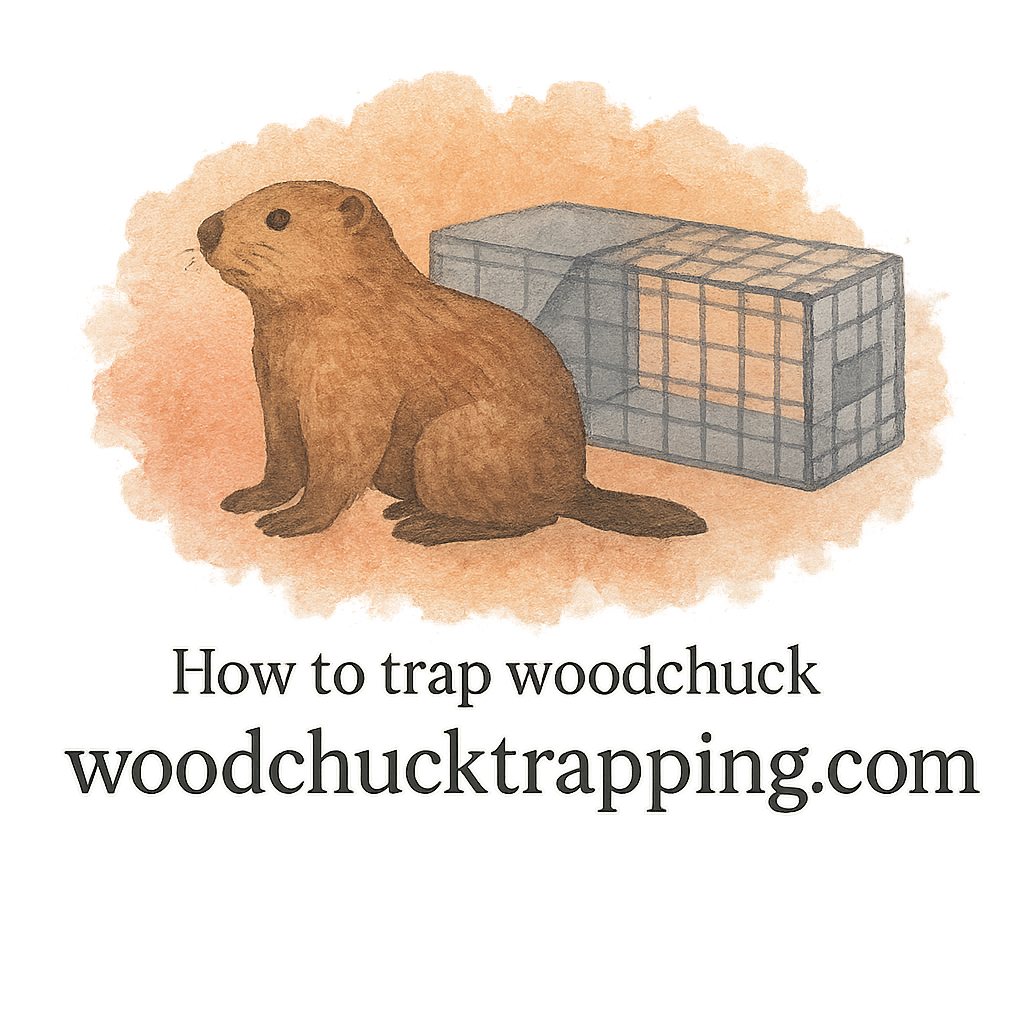Introduction
Got a woodchuck tearing up your yard? Wondering whether you should set your traps at dawn or dusk? You’re in the right place! Woodchuck trapping is more than just setting a trap and hoping for the best. It’s about timing, strategy, and knowing your furry opponent. This guide breaks down 7 night vs. day woodchuck trapping tips that can help you trap smarter, not harder.
We’ll dig into woodchuck behavior, timing secrets, and gear hacks that make all the difference—all while linking to trusted resources like WoodchuckTrapping.com and related guides. Let’s dive in!
Understanding Woodchuck Behavior
Nocturnal or Diurnal: What Are Woodchucks?
Contrary to popular belief, woodchucks (also called groundhogs) are diurnal, meaning they’re most active during the daytime, especially in the early morning and late afternoon. So if you’re only trapping at night, you might be missing your best chance.
Learn more about their behavior at Signs of Infestation.
Seasonal Activity Patterns
Woodchuck activity changes with the seasons. In the spring and summer, they are more active, making this prime trapping season. In the fall, they start preparing for hibernation and become more cautious.
The Importance of Timing in Woodchuck Trapping
Why Timing Affects Success Rates
The time you set your trap matters—a lot. Since woodchucks are most active during daylight, setting traps in the early morning gives you the upper hand. However, some nighttime success is possible with strategic placement and baiting.
Environmental Factors and Trapping Efficiency
Weather, moon phases, and food availability all influence woodchuck behavior. Rainy days or extreme heat may push them into hiding, while overcast mornings can extend their activity.
Explore Prevention & Damage for habitat impact insights.
7 Night vs. Day Woodchuck Trapping Tips
Tip 1: Scout the Area First
Look for Burrows and Signs
Before you set any traps, scout the area. Look for fresh burrows, chewed plants, and tracks. This tells you where and when woodchucks are moving. Burrows give away a lot of clues!
Tip 2: Use the Right Bait and Lure at the Right Time
Best Night Baits vs. Day Baits
During the day, woodchucks love fresh vegetables like lettuce or carrots. At night, you might consider stronger-scented bait like apples or melon to draw them out. Check out baiting tips at Baiting & Luring and Lure.
Tip 3: Optimize Trap Placement Based on Time of Day
Morning Routes vs. Evening Routes
Day traps should be set along morning routes near burrow exits. Night traps may need to be closer to food sources since they might not roam far. Use your observations to determine movement paths.
Learn more from Trapping Techniques and How to Trap.

Tip 4: Adjust Trap Type and Gear
Compact Traps for Day, Heavy-Duty for Night
In daylight, smaller compact traps like cage traps are effective. At night, when visibility is low and risks are higher, go for sturdier traps. Read real gear reviews at Equipment Reviews and explore Trap Gear.
Tip 5: Monitor Weather Conditions
Weather Effects on Night vs. Day Movements
If it’s rainy or too hot, woodchucks might adjust their routine. Cool, cloudy days can extend daytime activity, while warm nights may bring rare nocturnal appearances. Plan your trapping window accordingly.
Tip 6: Stay Safe and Legal
Night Trapping Safety Measures
Trapping at night? Be extra careful. Use flashlights, wear gloves, and be aware of local wildlife. And always check your state’s trapping laws at Laws & Safety and Safety.
Tip 7: Use Scent Control Techniques
Gloves and Scent-Free Practices
Woodchucks have a keen sense of smell. Wear gloves and avoid leaving human scent near traps. This is especially important at night. Check the importance of scent control on Trap Scent and Gloves.
Choosing the Right Equipment for Time-Based Trapping
Recommended Tools and Gear
For daytime trapping, go with simple cage traps and reliable bait. At night, opt for equipment with added security like locking doors and motion sensors. Browse essential tools at Tools and Trapping Essentials.
How to Set Up for Maximum Efficiency
Your trap should blend into the environment. Use leaves or branches to disguise it. Make sure it’s stable and check it often—traps left too long may stress the animal unnecessarily. For humane tips, visit Humane.
Mistakes to Avoid When Trapping Woodchucks
Ignoring Time of Day Behavior
Many trappers forget that woodchucks are daytime creatures. If your traps are only active at night, your success will suffer.
Improper Baiting or Placement
Don’t just toss in any vegetable and hope for the best. The wrong bait or trap location wastes time. Always match bait to time of day and place traps near recent activity.
Conclusion
Trapping woodchucks isn’t just about setting traps randomly. Understanding their daytime behavior, choosing the right bait and gear, and adjusting your approach based on weather and season can make all the difference. Whether you’re going after them under the sun or by moonlight, use these 7 tips to stay a step ahead.
For more expert guides and in-depth articles, explore WoodchuckTrapping.com and our rich list of resources on tags like Trapping, Infestation, and Woodchuck.
FAQs
1. Are woodchucks active at night?
Not usually. Woodchucks are mostly daytime creatures, especially active during the morning and late afternoon.
2. What’s the best time of day to set a trap?
Early morning is ideal, right before they come out to feed.
3. Can I trap woodchucks at night?
Yes, but it’s less effective. If you do, use scent-heavy bait and check traps frequently.
4. What bait works best for woodchucks?
Fresh veggies like carrots or lettuce work great during the day. Apples and melons are better at night.
5. How do I avoid human scent on traps?
Use gloves and avoid touching bait or trap interiors with bare hands.
6. What type of trap should I use?
Compact cage traps for day use and heavier-duty traps for night setups are recommended.
7. Is it legal to trap woodchucks in my state?
Check your local laws at Laws & Safety to be sure.


